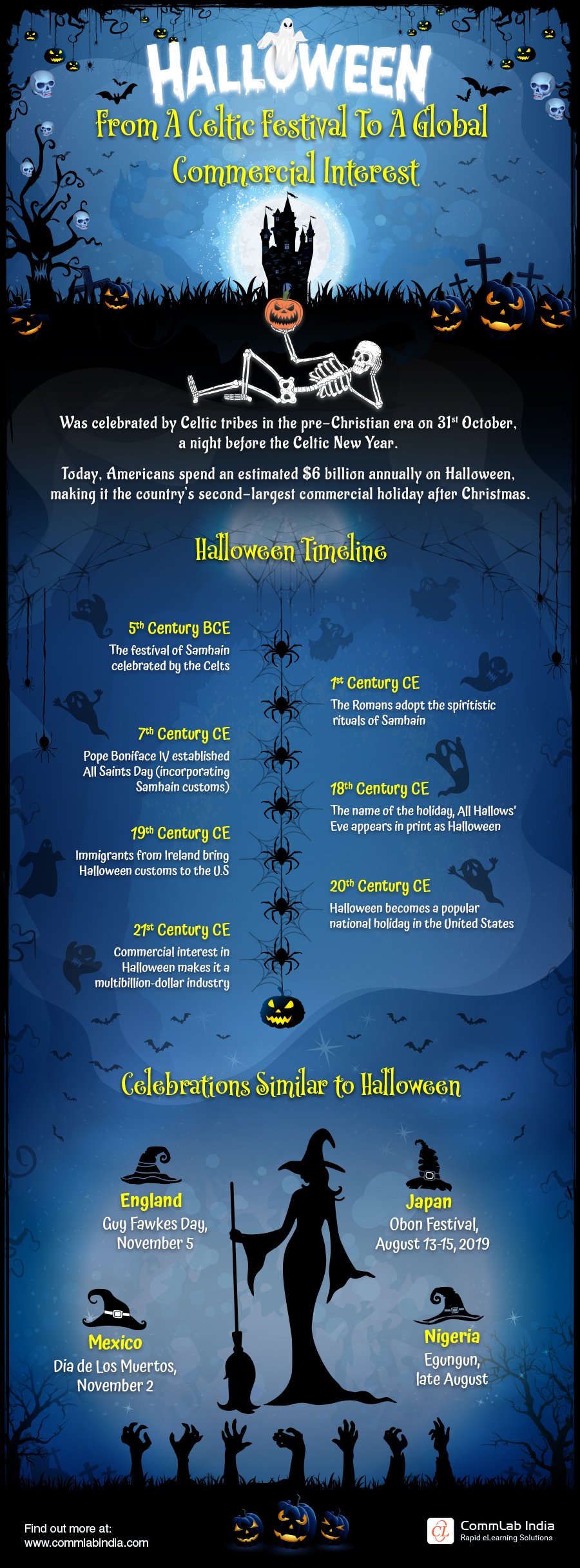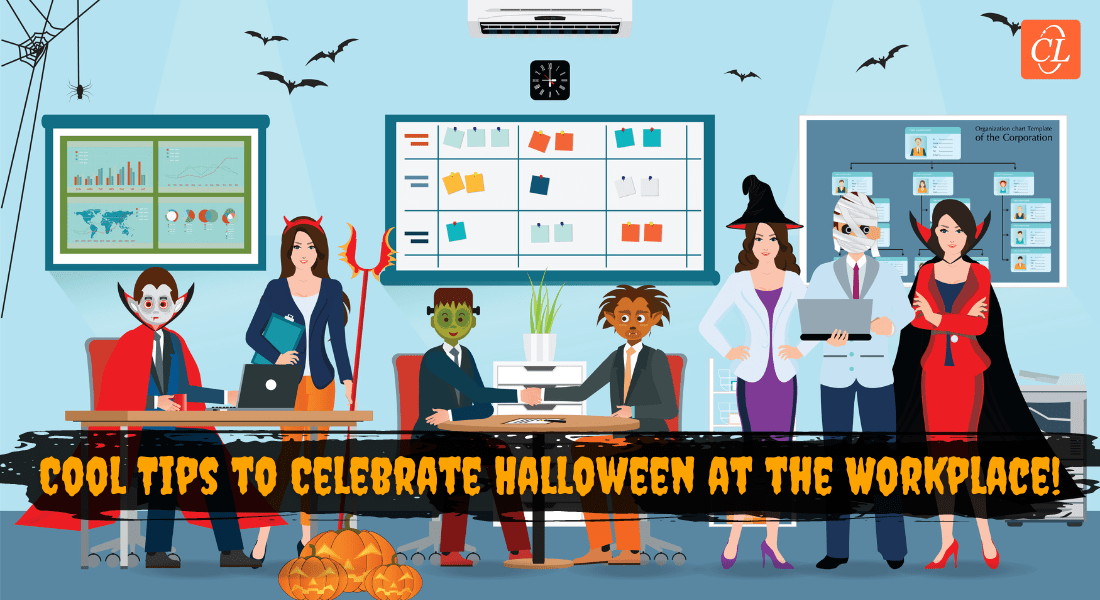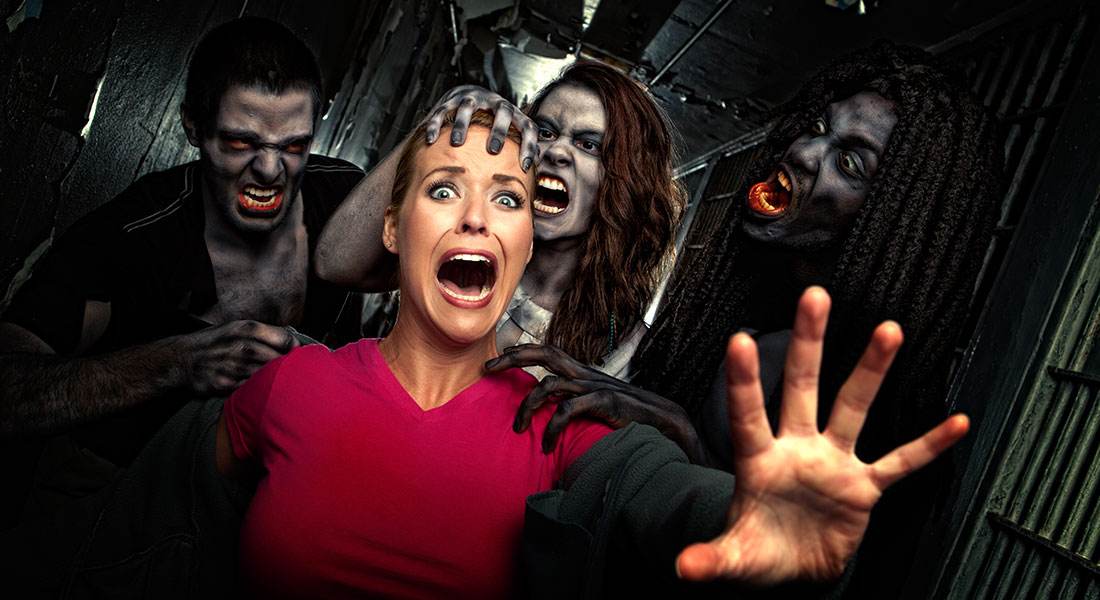The History of Halloween In A Nutshell

What comes to your mind first when you think of Halloween? Jack-o-lanterns, costume parties, tricks and treats…right? But we are far from the truth about its history and origins.
The History of Halloween
We can trace the history of Halloween to the ancient Celtic festival of Samhain over 2000 years ago. Celts lived in the region that is now Ireland, England, and northern France. The festival of Samhain was a celebration of the end of harvest or summer and regarded as the “Celtic New Year” on November 1. The Celts believed that on the previous night – October 31 – the world between the living and the dead would dissolve and they could cause misery such as sickness or damaged crops.
In addition to this, Celts also thought the presence of supernatural bodies helped the Celtic priests (Druids) in prophesying the future. Amidst the vagaries of the natural world, these prophecies were a source of comfort during winter months.
In the 8th century, Pope Gregory III decided November 1 would be celebrated as All Saints’ Day, moving the observance day to honor all saints from May 13. All Saints’ Day integrated some of the traditions of Samhain. And the previous evening, October 31, evolved to be known as ‘All Hallows Eve’, now celebrated annually as Halloween.
Traditions and Celebrations
On this day, the Celts used to place skeletons by the window to represent the departed. To prevent ghosts from attempting to enter homes, people would keep bowls with food outside their doors to appease them. People also lit huge bonfires to ward off the ghosts.
They would also hollow and carve vegetables such as turnips – to scare away wandering spirits that might trouble them. The modern ‘jack-o-lantern’ hails from an Irish legend of Stingy Jack, a miserable, hard-drinking farmer who tricked the Devil to climb an apple tree and trapped him.
The carving of pumpkins is associated with immigrants from Ireland coming to America during the late 19th century. They found that pumpkins, a native American vegetable were easier to carve and made perfect jack-o-lanterns. Thus, they popularized the Halloween celebration in America.
Over the centuries, from an ancient Celtic day, Halloween has evolved into a day of pomp, parties, and show. Equally enjoyed by kids and adults, modern-day Halloweens are all about trick-or-treating, carving jack-o-lanterns, family gatherings, costumes, and treats.
However, there are interesting traditions and beliefs rooted in Ireland that today’s party-lovers have forgotten. These obsolete rituals, focused on the living and their future, instead of the departed ones.
- In 18th century Ireland, a match-making cook would bury a ring inside her mashed potatoes and the person to find it at the dinner table would bring true love.
- Another superstition had it that a young woman would dream about her future husband on Halloween night if she ate a sugary concoction prepared from hazelnuts, walnuts, and nutmeg before going to bed.
However, the custom of dressing for Halloween can be said to be both modern and Celtic. It was believed that spirits came back to earth on Halloween and people thought they ran a risk of encountering them. To remain unrecognized by them, people would mask themselves and wore ghoulish costumes while leaving home after dark. This way the ghosts would mistake them as fellow mates and not create a nuisance.
So that was a brief history of Halloween. Happy Halloween!!







